Galway is a bustling city on the West Coast of Ireland. It is surrounded by stunning beauty spots and there are plenty of villages in the county that are worth a visit.
The route around the famous Galway Bay coastline boasts some fabulous views and there are several places to stop and relax on the beaches or enjoy activities such as hiking.
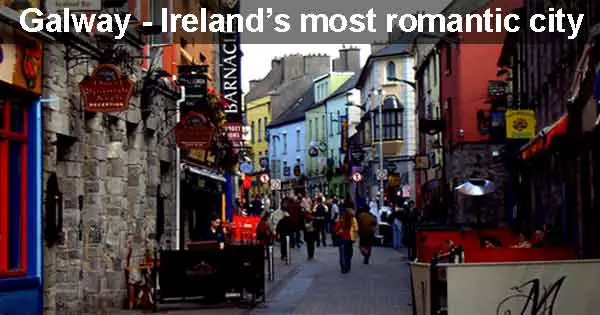
South of the city is tranquil green countryside. It is an area that inspired Irish romantic poet W.B. Yeats, who often visited the area.
You can take cruises on the lakes near to Galway Bay.
Galway Bay
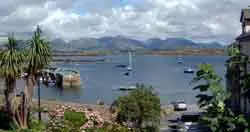 Galway Bay is the huge expanse of water that drives into the west coast of Ireland. It boasts some wonderful views and it can be enjoyable to simply drive along the coast.
Galway Bay is the huge expanse of water that drives into the west coast of Ireland. It boasts some wonderful views and it can be enjoyable to simply drive along the coast.
It is about 50km in distance so sporty types might even want to take in the views by cycling along the bay.
As well as the views, there are numerous activities that attract tourists to the bay. These include taking a cruise of the bay, going out on a row boat, swimming in the sea at one of the beaches, or deep sea fishing.
There are several small islands in the bay and the Aran Islands are also just off the west of the coast.
The Galway Hookers
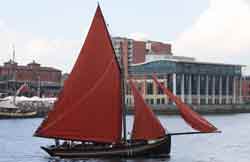 The Galway Hookers are traditional fishing boats that are unique to Galway. The fishermen needed specially designed boats as the tides are so strong on the west coast of Ireland.
The Galway Hookers are traditional fishing boats that are unique to Galway. The fishermen needed specially designed boats as the tides are so strong on the west coast of Ireland.
The boats had a strong mast and main sail with two foresails. Traditionally the sails were a deep dark red and the boat was black.
Thanks to a recently renewed interest in the Galway hooker, several boats have been reconstructed. Every year at the Cruinniú na mBád (Gathering of the Boats) Festival, contestants race Galway Hookers across Galway Bay from Connemara to Kinvara.
Quay Street
Quay Street is in the city centre and is full of good shops, cafes and bars. The colourful buildings add great character to the area.
Music fans will enjoy the choice of live music on offer in the pubs on Quay Street.
Galway Arts festival
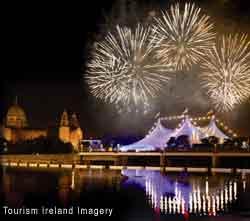 Galway is host to one of biggest art festivals in Ireland. The Galway Art Festival takes place for a fortnight every July and features a big selection of visual and performance art.
Galway is host to one of biggest art festivals in Ireland. The Galway Art Festival takes place for a fortnight every July and features a big selection of visual and performance art.
Several creative disciplines are on show such as, music, comedy, literature, dancing and lots more. The festival attracts over 150,000 people from across the world.
It was started in 1978 and over the years it has grown to rival Scotland’s Edinburgh festival. Artists such as Joni Mitchell, Blondie, Primal Scream and David Gray have all performed there in previous years.
Connemara National Park
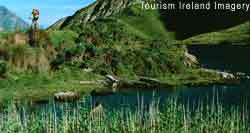 Connemara National Park is one of Co Galway’s many beauty spots. It covers almost 3,000 hectares and features mountains, woodlands, grasslands, bogs and heaths.
Connemara National Park is one of Co Galway’s many beauty spots. It covers almost 3,000 hectares and features mountains, woodlands, grasslands, bogs and heaths.
Much of the bogs are home to insect eating plants while high in the mountains there are roseroot, purple and starry saxifrages, lesser twayblade, and mountain sorrel plants which are usually found in colder European countries and even the Arctic.
There are several species of animals living in the park such as bats, foxes, rabbits, stoats and shrews. There is also a herd of pure-bred ponies that were presented to the state by the late President Childers.
Thousands of birds live in the park. There are a variety of species including kestrels, robins, skylarks, meadow pipits, woodcocks, starlings and wrens. During the winter species such as redwing and fieldfare migrate to the park from Eastern Europe.
Eyre Square
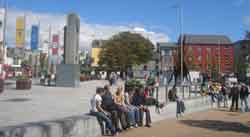
Eyre Square is a focal point of Galway city centre. It is a lively and attractive inner-city public park which has a number of shops and is also close to two of the city’s busiest shopping streets.
The square has officially known as John F Kennedy Memorial Park since 1965. The President had visited Galway before he was assassinated in 1963. There is a portrait bust of JFK in the square.
The Browne Doorway is one of the landmarks in the square. It was the doorway of the house on Lower Abbeygate Street that belonged to the Browne family.
The square was redeveloped between 2004-06 and was awarded the Irish Landscape Institute Design Award in 2007.
Visitors and locals often like to stop and sit down in the square to relax and soak up the atmosphere.
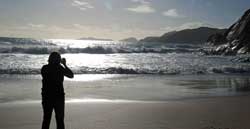
Ireland West Tours
See Ireland the way you want to with Ireland West Tours. Owner and tour guide Jim Parslow allows his guests to set their own itinerary, so they can see as much or as little of whatever they like. Find out more about about Ireland West Tours.
Tunes in the Church
Many tourists are blown away by the Tunes in the Church experience at St Nicholas’ Church. Several fantastic musicians perform traditional Irish folk songs in the church several nights a week.
The acoustics and ambient settings of the medieval church set a famulous tone. The audience are encouraged to interact with the performers and ask questions about the songs or instruments they are playing.
It creates a relaxing atmosphere and makes sure every performance remains fresh.
The Salthill Promenade
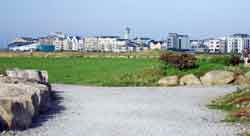
The Salthill Promenade overlooks Galway Bay. It is the longest Promenade in Ireland and has some fantastic views.
It is a popular place for joggers and cyclists and even roller bladders. The flat 3km trail along the coast provides a pleasant area to exercise. Of course it’s not only for sporty types. Anybody can enjoy a slow walk along the promenade or take a seat by the seafront and watch the world go by.
On a clear day the rolling hills in Co Clare provide a fantastic view.
The Salthill Promenade was mentioned in the song, Galway Girl, which was made famous by American singer, Steve Earle and Irish singer, Mundy.
Aran Islands
The Aran Islands are three rugged islands in the mouth of Galway Bay. They are home to some historical monuments as well as some fantastic scenery.
The people living on the islands still speak Gaelic as their first language.
The biggest island is Inishmore, with a population of about 1,000. It is home to several ancient churches and stone forts. One of the stone forts, Dun Aengus, is a key attractions on the island. It rests on a cliff that rises 100 metres out of the ocean and contains an inner court.
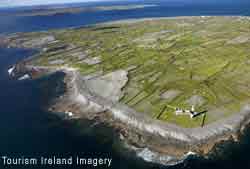
The court is surrounded by a wall that is six metres tall and five metres thick. Many experts believe it to be one Europe’s finest prehistoric monuments. You can take a bus tour of Inishmore or explore it by cycling through or even take a ride in a horse and cart.
Inishmaan is the middle island and has about 200 inhabitants. It covers 2,252 acres. It is the most untouched of the islands and has some stunning plant life. Plants from the vastly differing climates of the Arctic and Mediterranean grow on Inishmaan.
Inisheer is the smallest island and the closest to the mainland. Three hundred people live on Inisheer and it covers 1,400 acres. It has a similar landscape to the Burren. Nature lovers enjoy the variety of flora and fauna. There are also several bird species.
There are several ruins of ancient monuments including two 9th century churches, a 16th century castle thought to have been built by the O’Brien clan and a Bronze Age tumulus that is 4,000 years old.
Athenry
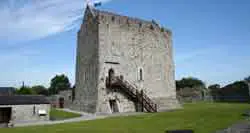
Any self respecting Irish music lover will know the song, Fields of Athenry. The town of Athenry is 16 miles to the east of Galway. As well as the fields, visitors can see the remains of an old castle that was built in the 13th century.
The Heritage Centre in Athenry offers guided tours of the medieval buildings. Visitors can get in the spirit by dressing up in medieval costume. There is also a maze and activities such as archery.
The ruins of Athenry Castle are another hotspot for tourists. It is estimated that it was built around 1250 and now just an outer wall and a three story tower remains. Many of the features are well preserved including the doorway on the first floor, although the steps leading up to it are modern.
Twelve Bens
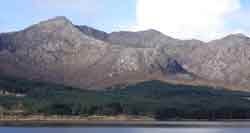
The Twelve Bens is a mountain range in the Connemara countryside in Co Galway. The mountains are between 400metres and 729 metres high.
Experienced hikers can climb all 12 in one day. However, just taking in one or two is enough for a lot of visitors. All of the mountains are safe to climb and the views are spectacular.
Lough Corrib
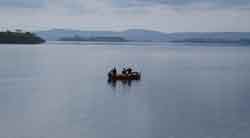
Lough Corrib is a huge lake in Co Galway that is popular for fishing and also just for sailing across and relaxing. The views are fantastic. At 35 miles in length, it is the 2nd largest area of fresh water in mainland Ireland.
There are hundreds of islands in Lough Corrib. The most famous is Inchagoill. It is a wooded island and it has great views. There are several different walking routes around Inchagoill and it has a number of secluded beaches and woodland areas.
Several species of animals live in Lough Corrib and visitors might be lucky enough to see otters, mink, stoat, hawks bats and frogs.
Tourists can take cruises of the lake that take in many of the fantastic views and peaceful surroundings on offer. There are also sites of historical interest such as ancient monastic settlements and castles.
The lough is connected to the Irish Sea by the River Corrib.
Kinvarra
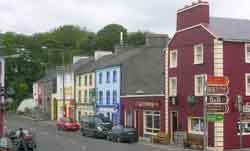
Kinvarra is a village on the coast of Galway Bay. It is a picturesque place and great to stop by while travelling along the coast. There is a fishing harbour and cottages on the pier.
The village hosts a traditional music festival in May and a fishing boat gathering every August. Dunguaire Castle is to the east of the village. The castle was built in the 16th century and was used in the 1979 film, North Sea Hijack.
Spiddal
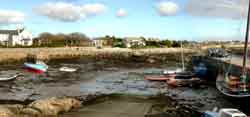
Spiddal is a village on the coast of Galway Bay. The locals speak both Irish and English and students visit the village every year to learn the Irish language at Colaiste Chonnacht, a local college. The road signs in the village are in Irish.
There is a shop opened by craft workers where visitors can see skilled work such as candle making, bodhran making, weaving, celtic jewellery and pottery taking place and buy the finished products.
Spiddal is home to one of Co Galway’s six Blue Flag beaches, Tra na mBan. Visitors also like to walk through Shannagarraun wood which features, Oak, Holly, Birch and Hazel trees and is a special Area of Conservation.
Coole Park
Coole Park is a natural wildlife reserve with some fantastic walks that take in woods and lakes. It is home to red deer and red squirrels.
There is a choice of two walks through the park. Firstly the Family Trail, which takes in the wildlife and the Autograph Tree at a distance of 1.75km. Secondly the Seven Woods Trail which is longer at 4.5 km and takes in the woods that featured in Yeats’ work. There is plenty of wildlife such as red squirrels, swans butterflies and stoats.
The park was once the grounds of a mansion owned by Lady Augusta Gregory, who co-founded the Abbey Theatre with W.B. Yeats and Edward Martyn.
It played a prominent in the Irish literary revival in the early 20th century as Lady Gregory hosted some of the most famous novelists and playwrights of the generation including Yeats, George Bernard Shaw, Sean O’Casey, John Millington Synge and many more.
They all carved their initials into a beech tree that is known as the ‘Autograph Tree’ and still stands today.
Sadly the mansion is no longer there as it fell into ruin and was dismantled
Cong Abbey
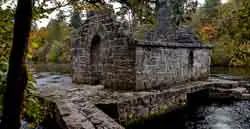
Cong Abbey is the historical site the 12th century High King of Ireland, Turlough O’Connor established his Augustinian abbey.
It was a leading spiritual centre of it’s day. It used to be home to thousands of scholars and craftsmen.
Over the centuries it has fallen into ruin but the cloisters have been partly reconstructed and the remains are still as magnificent as they are fascinating.
There are other buildings on the grounds of the abbey including a fishing house used by monks that was built between the 15th and 16th centuries.
The site is situated on the border of Co Galway and Co Mayo.
Thoor Ballylee
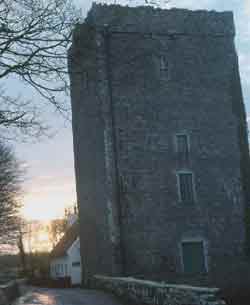
Thoor Ballylee was built in the 15th or 16th century and is also known as Yeats’ Tower. It is a fortified tower house near the town of Gort.
The poet, W. B. Yeats fell in love with the castle, and also the area in general. He and his wife lived in the castle during the 1920s.
In the years after Yeats’ family moved out, the tower was neglected and fell into ruin. However, in 1965, to celebrate the 100th anniversary of his birth, the tower was restored and opened as a museum. Sadly the foods of 2009, damaged the tower and it has been left unused ever since.
Galway Atlantaquaria
Galway Atlantaquaria is Ireland’s largest aquarium. They have exhibitions of underwater life from all over the world as well as Ireland’s diverse marine ecosystem.
Visitors can see creatures such as sharks, rays, sea bass, dogfish, turbot, halibut, crabs and lobsters.
There are numerous educational displays at the aquarium. There are also live presentations and interactive sessions in which visitors get to touch the animals.
The largest tank in the aquarium is the Ocean Tank. It contains numerous species of shark, crabs, cod and Pollock. It is four metres deep and contains 120 tonnes of salt water.
There is a skeleton of a fin whale on display at the aquarium. The whale was beached in 1994 on the coast of Ballyheigue, Co Kerry. The fin whale is second only to the blue whale as the largest species ever to live.
The ‘splash tank’ was designed to replicate the climate of the west coast of Ireland and is filled with a tonne of salt water. The water splashes every 40 seconds as the waves of the sea do against the shore. The creatures in the tank such as sea bass feel right at home.
The biggest pool, in terms of area covered, is the ray pool. Although it covers the largest area, it is very shallow and visitors can reach over and touch the fish. There are five species of ray; Thornback, Undulate, Painted, Blonde and Spotted. All the species are friendly and tame around visitors.
Spanish Arch
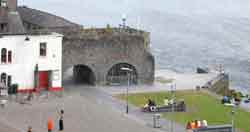
The Spanish Arch is the remains of a bastion that was built in the 16th century to protect merchant ships from looting. It stands on the bank of the River Corrib, where the river runs into the sea.
The building was originally an extension of the Galway city walls that were built to protect the quays. It is known as the Spanish Arch because of the trade with Spain that took place via the Quays.
The Arch contains a wooden sculpture called Madonna of the Quays. It was sculpted by Claire Sheridan, an artist who lived in the house next to the Arch in the 1950s.
Galway City Museum
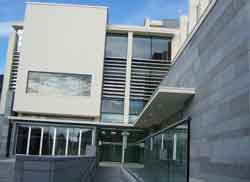
Today the arch is home to the Galway City Museum. The museum contains artefacts that that relate to industries such as farming and the fishing trade that has always played a big part in Galway’s history.
The is a military exhibit of the Connaught Rangers, who were a Regiment of Irish Soldiers in the British Army. There is also an exhibit of stone carvings from the 17th century to represent Galway’s medieval heritage.
Trad on the Prom
Trad on the Prom is an evening of Irish entertainment that is not to be missed if you enjoy traditional folk music.
The show includes dancing and live music from quality performers many of whom have worked with high profile shows and bands such as Lord of the Dance and the Chieftains.
It takes place at Galway Bay hotel which is an impressive venue and has been named the best 4 star hotel in Ireland.
Kilmacduagh
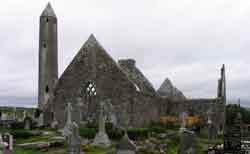
The ancient town of Kilmacduagh has a series of monastic ruins that were built in the 7th century. Other monuments in the area include a Leaning Tower, a 14th Century cathedral and several ecclesiastical buildings from the 13th and 14th centuries.
Kilmacduagh is about five miles to the east of Galway.
Galway nightlife
The Blue Note Pub has a chilled atmosphere and attracts a young crowd with DJs playing several nights a week. Monroe’s Tavern offers live music most nights of the week.
There are different genres of music on different nights including covers bands, rock and folk. Irish music legends such as Paul Brady and Christy Moore have played there.
More top attractions in Ireland
Galway named as one of the ‘best trips’ in the world by top American travel magazine